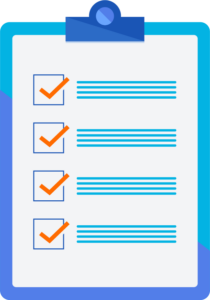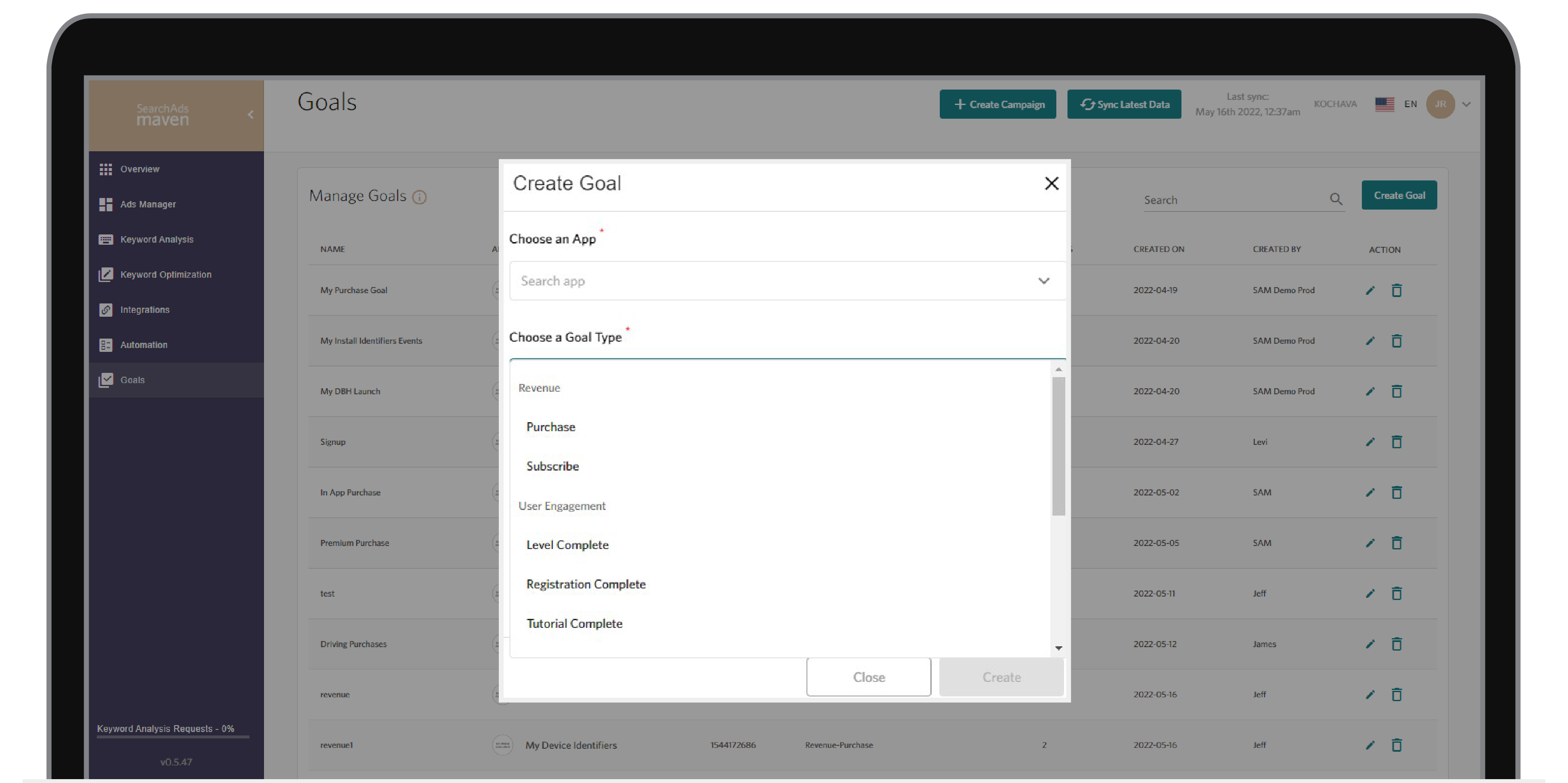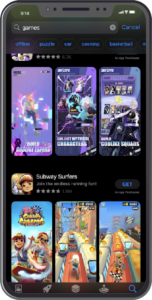Apple Search Ads 104: MMP Integration & Goal Creation
In the prior parts of our series, we went over taking the data we have been collecting from Apple Search Ads (ASA) and broke it down into its simplest parts. Analyzing the information we have access to from ASA is crucial but, in simple terms, limiting. The Apple App Store only allows you to view what it can see. High-quality, true profit-generating decisions require information that happens after your app is downloaded and installed.
Getting to that information requires us to move our ASA strategy into the next level with mobile measurement partner (MMP) integration & goal creation within Search Ads Maven.
MMP integration
MMPs, as we have touched on in earlier posts, are third-party measurement tools that allow you to measure and compare the effectiveness of your ad spend across many different marketing channels and partners on full-funnel app engagement data. The biggest MMP feature that will help us here is analyzing and optimizing our ASA performance against events that happen after the customer leaves the app store and starts using the app. This is incredibly important for apps that are free or make most of their margin with in-app actions.
Now, which events in your app get incorporated into goals created in Search Ads Maven will depend on what you have set up to measure via your MMP software development kit (SDK). Name your goals corresponding to the MMP events and metrics you build into them, so that there is no possibility of getting different definitions for goals between your systems. You want everything to be Apples-to-Apples (no pun intended). That being said, some specific examples can be used well with ASA campaigns. Let’s cover custom goal creation.

Custom goals
Using custom goals is essential to breaking past ASA’s install endpoint. With basic ASA data, we know about impressions, installs, and downloads, but now we can chart performance across three different deeper funnel goal types: revenue, user engagement, and user activity. Here are the various goal types and the corresponding event types available in Search Ads Maven.

| Revenue | User Engagement | User Activity |
|---|---|---|
| Purchase | Level Complete | Level Complete |
| Subscribe | Registration Complete | Add to Cart |
| Tutorial Complete | Add to Wishlist | |
| Start Trial | Checkout Start | |
| App Launch |
Revenue: These goal types are used to measure money making interactions you have within your app (e.g. purchase, subscription) based on criteria you set up with your MMP. You can have different revenue events measured separately.
| EXAMPLE: Let’s say your app has three tiers of subscription levels. Level 1, Level 2, and Level 3 are set up with your MMP. Once you create those goals, you can find out which keywords generate the most sign ups & revenue for each of those levels. |
User Engagement: This goal tells you when the app is launched each time by a user. App activity can be tied directly to which keywords and bids generate the most. Remember, installs are the only thing ASA can measure, but it takes MMP integration to see if those campaigns met the goal of getting people to open your app.
| EXAMPLE: Your app is free and you monetize on ads, so generating anything for revenue will require people to open the app and open it often. You can tie the total number of app launches to ASA campaigns and see which ones get to the next important part of the top of the funnel. |
User Action: This goal can tell you how far people have gotten into using your app and see how much of your user base have interacted with it and progressed.
| EXAMPLE: You have a game app and users progress through levels and get more and more user involvement the further they go. Now we can find out which keywords get users to progress the furthest. This is a great predictor of which keywords generate the most user interest in your game and you can think of similar keywords to add to your discovery campaigns to improve their performance. |
Single event goals are nice but let’s say we wanted to go further. You can combine multiple events into one goal type so that you can adjust your granularity however you see fit. Combine revenue and user action so you can measure specific actions and the revenue they generate based off which keyword they searched for. The bottom line is that not all keywords are the same value to your app. With Search Ads Maven you can find which keywords you are over and underspending on.
Getting the most out of your ASA spend
Much of what we do here at Search Ads Maven is based on the direct control of your ASA bids in search. The crowded search marketplace is the first hurdle you need to conquer if you are going to get traffic to your page. However, once they get there, they need to convert. Your app store page is a huge factor to get your “download” links turning into “open” for your customers. Increasing your store page conversion is essential to get the most out of your ASA campaigns. The right keywords to bid on are important, but you could be wasting your spend if all of those keyword bids end once they hit your page.
According to AppTweak, in 2021, the average conversion rate (app units/page views) across categories in the U.S. app store was 30%. This means that even customers who searched and showed interest in a specific app, two-thirds decided NOT to download it. While that number can fluctuate depending on the vertical and whether your app is free, it is clear that your app store page should be treated with immense importance.
What reviews are on the page, product videos, short description, and metadata influence how your app page converts. Your reviews are great places to also research your customer base. You can find new keywords to target based on words your user base used to describe in your app. Add these new keywords to your metadata and research campaigns to expand your market.

What’s in a name? Apparently, a lot. App titles and short descriptions give that quick, instinctual connection potential customers can have with your app. It’s important to include recognizable words that correlate with what your audience is looking for. It’s no surprise that so many game apps have the words like “battle,” “clash,” or “raid” as part of their name. If your app is already titled, make sure your screenshot captions include visual cues so, with just a glance, you catch their attention and they can know it’s your app they were searching for.
Your app description is also great for information but don’t be too verbose. While I am sure some of the long descriptions in the app store could be Pulitzer material, that isn’t what your customer is looking for. Keep your descriptions concise and informative because most customers are planning on spending five seconds not five minutes before deciding that this is the app they want. Product videos can help you stand out as well and, depending on the vertical, could really showcase your app.

